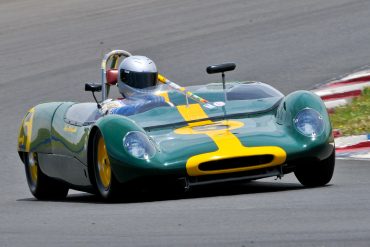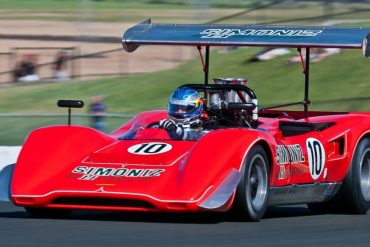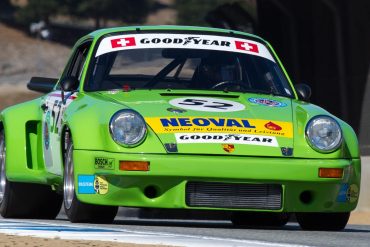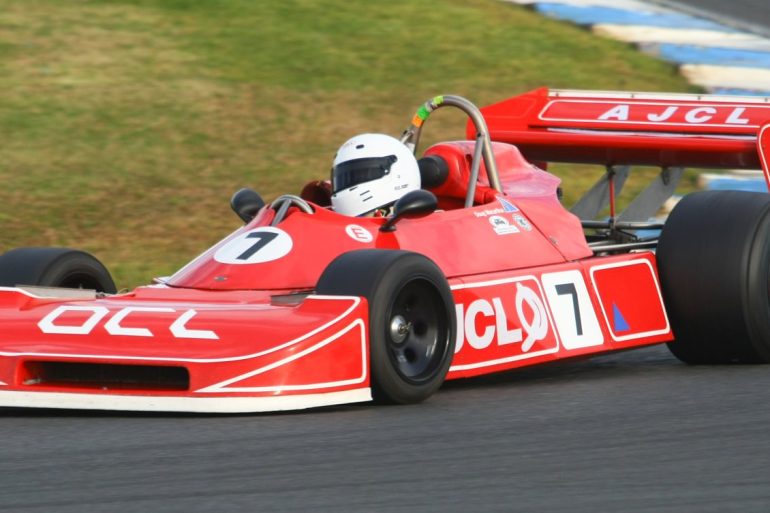Formula 5000 was a racing series for open-wheel, single-seat racing cars built to a specific set of rules. The engine...
Two-liter sports racing cars have always had a place to compete within the ever-changing regulations of international motorsports; the World...
The Canadian American Challenge Cup (Can-Am) was co-sanctioned by the SCCA and CASC; it was a series nicknamed the “unlimited” series. Although there was a basic set of rules, the cars had to be two-seaters with bodywork covering the wheels, doors, a windscreen, brake lights and meet various safety requirements....
From the very beginning of the automobile, men with a passion for speed and technology built cars to compete. These...
The Canadian American Challenge Cup was co-sanctioned by the SCCA and CASC; it was a series nicknamed the “unlimited” series....
The Canadian American Challenge Cup was co-sanctioned by the SCCA and CASC—it was a series nicknamed the “unlimited” series. Although there was a basic set of rules, the cars had to be two-seaters with bodywork covering the wheels, have doors, a windscreen, brake lights and various safety requirements. However, there...
The Canadian American Challenge Cup was co-sanctioned by the SCCA and the CASC; it was a series nicknamed the “unlimited”...
Over two-liter Grand Touring cars have always had a place to compete within the ever-changing regulations of international motorsports; the...
The under 2-liter Grand Touring (GT) cars have always had a place to compete within the ever-changing regulations of international motorsports; the World Sports Car Championship from 1953-1961, the Speedworld Challenge from 1962-1963, the International Championship of Makes from 1964-1971 and the World Championship of Makes from 1972-1981. This included...
The Canadian American Challenge Cup was co-sanctioned by the SCCA and CASC—it was a series nicknamed the “unlimited” series. Although...
The Canadian American Challenge Cup was co-sanctioned by the SCCA and CASC—it was a series nicknamed the “unlimited” series. Although...
From the very beginning of the automobile, man built cars to compete with a passion for speed and technology. These early innovators are in an elite club with their place in automotive history guaranteed as the creators of a true classic sports car, a genuine thoroughbred. The development of the...
From 1964 to 1978, a series of flat-bottomed formula cars were manufactured to serve as steppingstones to Formula One and...
Over two-liter Grand Touring cars have always had a place to compete within the ever-changing regulations of international motorsports; the...
The under 2-liter Grand Touring (GT) cars have always had a place to compete within the ever-changing regulations of international motorsports; the World Sports Car Championship from 1953-1961, the Speedworld Challenge from 1962-1963, the International Championship of Makes from 1964-1971 and the World Championship of Makes from 1972-1981. This included...
The Canadian American Challenge Cup was co-sanctioned by the SCCA and CASC—it was a series nicknamed the “unlimited” series. Although...
Formula Ford was a specification racing series created on the idea that the best drivers would win if they were...
The Canadian-American Challenge Cup was a series nicknamed the “unlimited” series co-sanctioned by the Sports Car Club of America and the Canadian Automobile Sport Clubs. Although there was a basic set of rules—the cars had to be two-seaters with bodywork covering the wheels, have doors, a windscreen, brake lights, and...
From the very beginning of the automobile man built cars to compete with a passion for speed and technology. These...
The Canadian American Challenge Cup (Can-Am) was cosanctioned by the SCCA and CASC; it was a series nicknamed the “unlimited”...
Two-liter sports racing cars have always had a place to compete within the ever-changing regulations of international motorsports; the World Sports Car Championship from 1953-1961, the Speedworld Challenge from 1962-1963, the International Championship of Makes from 1964-1971 and the World Championship of Makes from 1972-1981. There was even a European...
The Canadian-American Challenge Cup was an “unlimited” racing series co-sanctioned by the SCCA in America and the CASC in Canada....
Two-liter sports racing cars have always had a place to compete within the ever-changing regulations of international motorsports; the World...
From 1964 to 1978, a series of flat-bottomed formula cars were manufactured to serve as steppingstones to Formula One and the upper echelons of open-wheel racing. In the late ’50s, F2 and F3 were consolidated into Formula Junior. However, with that category’s demise at the end of 1963, F2 was...
The Canadian American Challenge Cup, co-sanctioned by the SCCA and the CASC, was essentially an “unlimited” series. Although there was...
The Canadian American Challenge Cup was co-sanctioned by the SCCA and CASC, and quickly became known as the “unlimited” series....
The Canadian-American Challenge Cup was co-sanctioned by the SCCA and CASC; it was a series nicknamed the “unlimited” series. Although there was a basic set of rules, the cars had to be two-seaters with bodywork covering the wheels, have doors, a windscreen, brake lights and various safety requirements, there was...
From the very beginning of the automobile, men with a passion for speed and technology built cars to compete. These...
From 1964 to 1978, a series of flat-bottomed formula cars were manufactured to serve as steppingstones to Formula One and...
The under 2-liter Grand Touring (GT) cars have always had a place to compete within the ever-changing regulations of international motorsports; the World Sports Car Championship from 1953-1961, the Speedworld Challenge from 1962-1963, the International Championship of Makes from 1964-1971 and the World Championship of Makes from 1972-1981. This included...
































